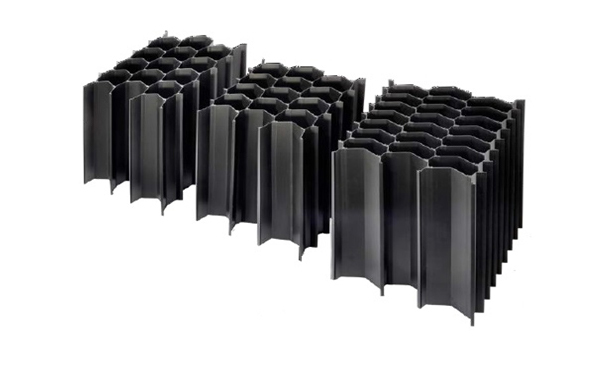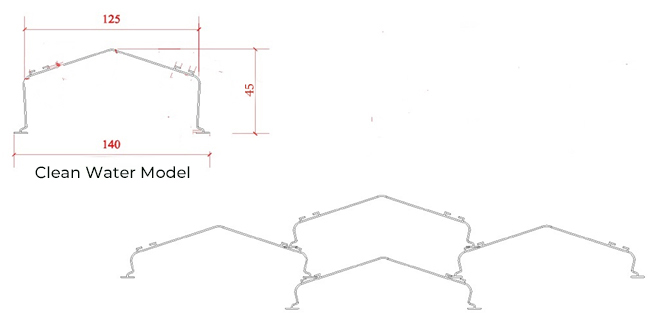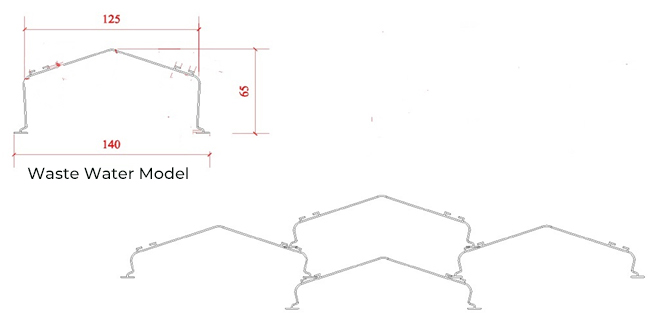
Lamella Settler Chevron
The main advantage of lamella clarifiers over other clarifying systems is the large effective settling area caused by the use of inclined plates, which improves the operating conditions of the clarifiers in a number of ways. The unit is more compact usually requiring only 65-80 % of the area of clarifiers operating without inclined plates. Therefore, where site footprint constraints are of concern a lamella clarifier system is preferred. The reduced required area allows the possibility for the clarifiers to be located and operated inside, reducing some of the common problems of algae growth, clogging due to blowing debris accumulation and odour control, that occur when the machinery is outdoors. Operation within an enclosed space also allows for a better control of operating temperature and pressure conditions. The inclined plates mean the clarifier can operate with overflow rates 2 to 4 times that of traditional clarifiers which allow a greater influent flow rate and thus a more time efficient clarification process. Lamella clarifiers also offer a simple design without requiring the use of chemicals. They are therefore able to act as pre-treatment for delicate membrane processes. Where necessary flocculants may be added to promote efficiency. Lamella clarifier performance can be improved by the addition of flocculants and coagulants. These chemicals optimize the settling process and cause a higher purity of overflow water by ensuring all smaller solids are settled into the sludge underflow. A further advantage of the lamella clarifier is its distinct absence of mechanical, moving parts. The system therefore requires no energy input except for the influent pump and has a much lower propensity for mechanical failure than other clarifiers. This advantage extends to safety considerations when operating the plant. The absence of mechanical results in a safer working environment, with less possibility for injury. Whilst the lamella clarifier has overcome many difficulties encountered by the use of more traditional clarifiers, there are still some disadvantages involved with the configuration and running of the equipment. Lamella clarifiers are unable to treat most raw feed mixtures, which require some pre-treatment to remove materials that could decrease separation efficiency. The feed requires initial processing in advanced fine screening and grit and grease removal to ensure the influent mixture is of an appropriate composition. The layout of the clarifier creates extra turbulence as the water turns a corner from the feed to the inclined plates. This area of increased turbulence coincides with the sludge collection point and the flowing water can cause some re suspension of solids, whilst simultaneously diluting the sludge. This results in the need for further treatment to remove the excess moisture from the sludge. Clarifier inlets and discharge must be designed to distribute flow evenly. Regular maintenance is required as sludge flows down the inclined plates leaving them dirty. Regular cleaning helps prevent uneven flow distribution. Additionally, poorly maintained plates can cause uneven flow distribution and sacrifice the efficiency of the process. The closely packed plates make the cleaning difficult. However, removable and independently supported lamellar plates can be installed. Commercially available lamella clarifiers require different concrete basin geometry and structural support to conventional clarifications system widely used in industry, thus increasing the cost of installing a new (lamellar) clarification system.

